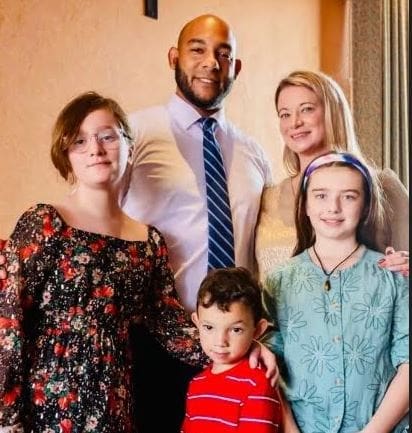
Delaware families are in the process of hearing back if they were accepted into their school of choice or if they were put on a waitlist.
After wading through the process of school choice, Erin Exelby found herself woken up in the middle of the night worrying what would happen if her children were waitlisted from their top selections.
School districts sent parents and children emails about a month ago saying whether they were accepted, denied or waitlisted for their preferred schools.
Waitlisting essentially means that a student has to wait and see whether slots are left after students formally accept seats they are offered.
Many do not. How many will, and where a student is on the waitlist can determine whether they actually can go to their desired school.
“It’s so stressful,” Exelby said. “As you’re even waiting after you fill out the application, you’re going through all these scenarios in your head even if they aren’t waitlisted.”
Her two daughters are heading into sixth grade and eighth grade next school year, while her fiancé’s son is heading into second grade – all in the Red Clay Consolidated School District.
“You are thinking, well what if they get into the second option, but they’re number four on the waitlist at their number one choice,” Exelby said. “Are they going to have four slots open, and then in the meantime you’re thinking if they’re waitlisted at number four, you run the risk of losing your spot at the other school.”
The First State is one of 13 in the country in which families are free to apply to any public school – district or charter – they wish to send their children to rather than sending them to the neighborhood school associated with their addresses.
Over the past month or so, districts have been presenting their school choice data for the 2024-2025 school year at their board meetings.
Some are experiencing more applications, and some less.
Indian River School District had 545 applications with 238 invitations being extended for the current school year. For the 2024-2025 school year, it had 378 applications.
Brandywine School District saw a 34% increase in choice applications over the past four years, from 676 to 729 to 770 to 906 this year.
Colonial School District has had 455 applications thus far, which is a slight decline from last year.
At this point, statewide data is incomplete. Some districts are still in the process of conducting the lottery to see who they will be inviting, and then boards have to vote on the invitations sent.
Indian River’s board will vote Monday to approve this year’s school choice invites, while Brandywine just recently conducted its lottery and needs to send out invitations.
The choice window for kindergarten – which closed in January for all other grades – stays open until the first day of the school year, so numbers sometimes spike on the back end.
“When a student is waitlisted, it means there are no current choice seats available at the requested school,” said Alison May, public information officer at the Delaware Department of Education.
As other students accept invitations to other schools, seats may become available at which point the school will notify the next student on the waitlist to offer a seat, May said.
“If your child is waitlisted for a higher priority school and invited to another school, you can accept the invitation of the other school,” she said. “Your child will remain on the waitlist for the higher priority school. The waitlist remains until the first day of the school year.”
Some schools have a much longer waitlist than others, said Kendall Massett, executive director of the Delaware Charter Schools Network.
“I wish there was more communication and clarity in regards to how many spots were available at each school,” Exelby said. “I understand that it’s done by a lottery, but I think what makes people so upset or frustrated around the choice application is that there’s not a lot of communication around it, it’s just ‘Hey, put these three schools and kind of you’ll see what happens.’”
Massett said some parents think it’s a first-come, first-serve system, which is incorrect.
“Even if there are like 7,000 applications, you do all 7,000 through the lottery, and that’s how you get your waitlist,” she said.
A number of families apply to multiple schools, she said, and they could get accepted to one through the lottery, but waitlisted to the other schools.
This creates a waiting-game, where parents are holding out to hear back from their other choices, which might have been a priority over the school they did get accepted to.
Even if they aren’t on the waitlist for a school, parents could be accepted to school B, but waiting on school A because school A has yet to conduct a lottery.
If a spot in school A opens up, and a parent enrolls their child there instead, then that spot in school B opens up for the child at the top of B’s waitlist.
Parents or guardians are required to let a school know if they are accepting an invitation by the third Friday in March, which is March 15 this year.
Unlike a college or university, where a student can technically put down deposits for however many schools they would like if they are indecisive, families can only accept one choice invitation.
There’s nothing in Delaware Code requiring schools to extend invitations by a hard date, but virtually all do by the end of February.
That means a parent could theoretically only have about two weeks to make a decision on where to send their child for the next school year.
The parental instinct to want what’s best for a child can make it more stressful for the parents than the student, but the process is a burden on children, too, Exelby said.
Exelby’s youngest daughter, who is 10, is at North Star Elementary but was accepted into the Cab Calloway School of the Arts for next year.
That is one of the more competitive schools in the state, and Exelby said she had to compile an extensive portfolio, including nine pieces of art.
“We were working on her portfolio for months,” she said. “I had her work after school with her art teacher, I had to help her create a PowerPoint, I had to help her create an interview video, and then she had to try out for the school.”
It’s not hard to imagine how disappointing it is for a 10-year-old to invest so much time and effort into the process and then not get in, Exelby said.
“Luckily ,she was one of the fortunate ones that did, she didn’t have to feel that rejection,” she said, “but there were plenty of her friends that were not accepted and really disappointed.”
Exelby’s oldest daughter, who is 13 and in seventh grade, is already beginning the process of starting to think and complete a portfolio for ninth grade, where she hopes to attend Cab Calloway for high school.
“My daughter will be in eighth grade next year, and I’m already thinking about the application for Cab Callaway because she’ll have to start it this fall and start on her portfolio,” Exelby said. “These are some of the obstacles, and I always feel like parents feel as if we’re doing college applications again.”
She said her fiancé moved to Delaware from Michigan, and the process for him was even more confusing to venture through, especially with deadlines and documents to complete – and his son was only in pre-school when they moved.
Exelby is almost a seasoned vet at this point, and still finds the process confusing and challenging.
Even so, she said she’s appreciative Delaware is a choice state. That opens the doors to opportunities that many underprivileged families would not have in other states.
Massett said parents have to think long and hard on that third Friday in March if they’re going to give up their spot to a school they were accepted to and hope for the best at a waitlisted school they prefer.
It’s important to remember that there are schools – charter and district – that will have spots open, so parents shouldn’t feel defeated if there aren’t spots at their top pick.
“There are great programs happening across all school types,” she said, “so don’t be disheartened. There’s so many great choices out there.”

Raised in Doylestown, Pennsylvania, Jarek earned a B.A. in journalism and a B.A. in political science from Temple University in 2021. After running CNN’s Michael Smerconish’s YouTube channel, Jarek became a reporter for the Bucks County Herald before joining Delaware LIVE News.
Jarek can be reached by email at [email protected] or by phone at (215) 450-9982. Follow him on Twitter @jarekrutz
Share this Post





